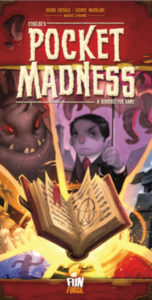 Greetings mortals. You are in my awesome presence once again. The human Tony has called me forth once more to look at another game. Apparently the last human who played a Cthulhu summoning game called Necronomicards is spending some “time” in a “mental health facility”. I’m here to review another card game about summoning my brothers, the Ancient Ones. CAN’T THE HUMANS GET THIS RIGHT ALREADY?! SPOILER ALERT! THIS ONE DOESN’T HAVE BLOODLETTING OR SACRIFICE EITHER! Oh well… here we go.
Greetings mortals. You are in my awesome presence once again. The human Tony has called me forth once more to look at another game. Apparently the last human who played a Cthulhu summoning game called Necronomicards is spending some “time” in a “mental health facility”. I’m here to review another card game about summoning my brothers, the Ancient Ones. CAN’T THE HUMANS GET THIS RIGHT ALREADY?! SPOILER ALERT! THIS ONE DOESN’T HAVE BLOODLETTING OR SACRIFICE EITHER! Oh well… here we go.
Pocket Madness is a game for 2 – 4 humans that takes 30 human minutes to play. It plays best with three humans.
Game Overview:
Pocket Madness (which sounds like a disease received from visiting Yuggoth) is a game about researching the Ancient Old Ones as recorded by the human Howard Phillips Lovecraft. By playing cards, the human players imagine themselves to be opening portals, publishing research and gaining “madness” (more like sanity if you ask me). The human player who is able to have the least “madness” at the end of the game wins.
Game Components:
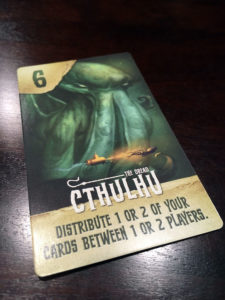
Again the humans have foisted upon me a game with larger than normal cards. The art is very nice including the number 6 card which showcases my HUGENESS. Witness the HUGE tentacles! The game also included small plastic cubes of translucent green to represent the “madness”. They’re fine but green brains could have been better imagery. The humans did not complain about the card quality.
The humans also told me that the implementation of the theme was pretty thin. This could have been a card game about trains even. THEY DARE TO CALL MY THEME THIN! But, yeah, I guess they are correct. The humans Bruno Cathala and Ludovic Maublanc haven’t truly committed to my awesomeness.
How to Play:
The humans setup the game by placing the cubes in the middle of the table and laying out the portal cards which show various great, ancient beings, myself included. The human dealing cards proceeded to shuffle the collection of location cards which are really just cards with numbers 6 to 12. He then deals two cards to each other human.
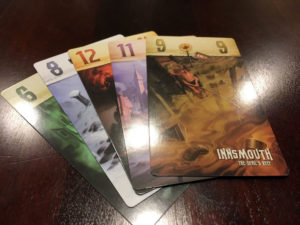
Each round of this game has a somewhat complex setup for the collection of 63 location cards. Seventeen location cards are removed from the deck. The deck is flipped over to the face up side. The 17 set aside cards are then shuffled back into the deck. The result is a deck with 17 cards face down and the rest face up. This deck is then splayed across the table in a giant array. This makes the choices of cards interesting with some visible to the humans and the face down ones are hidden. Very intriguing but not as straightforward for the human completing the task.
When the humans took turns, they took one of three actions. They could either draw 1-3 cards from the array, play runs of cards from 6-12, or play sets of three or more of the same card. If the human played a set, they collected one of the portal cards that matched the number. This gave the human a once-per-round special power. If the human played a run, all the other humans had to collect one madness cube. However, when additional runs were played in the same round, the humans took more cubes, two for the second, three for the third and so on.
When the array of cards were all taken or a human played their last card in hand as part of a set or run, the round ended. Any humans who still had cards in their puny hands took one madness cube for each different numbered card. So if a human had lots of different numbers, they were punished with more madness. Let me tell you, they got off easy!
When one human had 10 or more madness cubes at the end of a round, the game ended. Otherwise, a new round began with a new location array setup. The player with the fewest madness cubes eventually won.
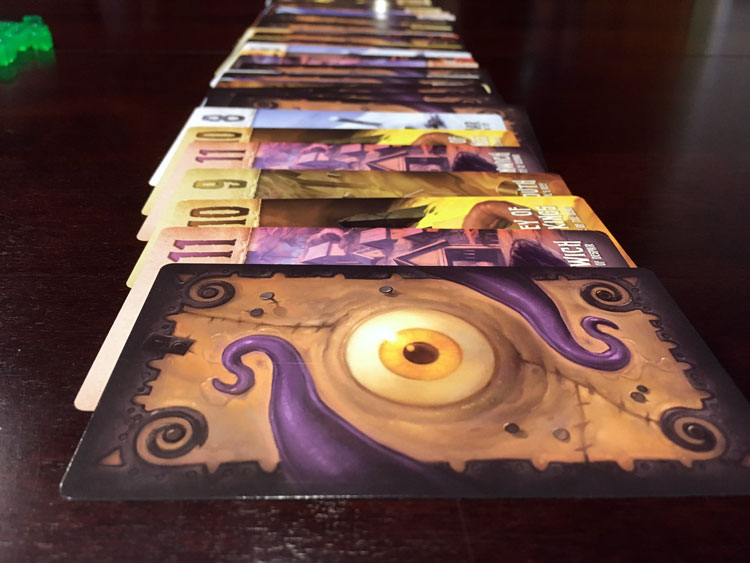
Game Experience:
The humans have told me this game plays like Gin and Rummy. Players must make combinations of cards and that either drives other players to defeat or gives players special powers to hopefully lose their cards faster. This dichotomy intrigues me and the decision whether to make your opponents go mad or take an easier route was interesting. Once one player has played a run of cards, the potential for other players to play runs increased since each successive run played is more damaging.
The other thing I found amusing was the human appreciation for seeing the cards face up or face down. Because the humans can’t see into the future, they aren’t aware of the numbers on the cards. If a human chose to draw three cards in the hopes of getting a good set or run, it was amusing to watch their disappointment or elation. This decision seemed to drive every turn. This didn’t slow down the game. The turns went by pretty fast.
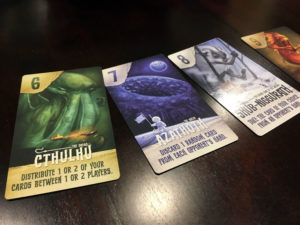
I also enjoyed how the smarter humans were able to use the abilities of the portal cards. My number 6 Cthulhu card seemed to be the most powerful. Using these correctly, the humans were able to strategize well about how best to lose their cards.
I’m beginning to understand the human concept of “time” by watching what occurred at the end of a game round. Because the splayed card deck needed to be setup again, I was forced to watch the human dealer construct the deck. It took many life cycles of the dread R’lyeh mosquito before the dealer was done setting up. Another player got up and got a drink during the process because there was little else to do. Because this seemed to annoy the humans, I thought to include this in my comments.
The humans said that this game, like the other game I reviewed (I HAVEN’T FORGOTTEN YOU ANDY HUNT!) is a filler, occupying “time” between games. For this, I can see much success. It’s not difficult for the humans to master and the decisions are interesting. I would suggest this game for a group even if they didn’t like the dread of staring at the great and ancient Cthulhu, and that’s saying A LOT!
Final Thoughts:
I started a game of Chaos Imperium with Azathoth when the universe began. Azathoth always takes long on his turns. Nyarlathotep also claims that galaxies move 1 space at round end. THEY DON’T YOU PLANET PUSHER! As I am slumbering between the turns of my epic game I shall enjoy watching the humans engage with Pocket Madness. There is a bit of randomness, but more interesting choices are presented. It’s also easy to learn. That’s always good for a galaxy as young as this one.
If you’d like to get a copy of Pocket Madness, you can pick it up for about $18.
Final Score: 3.5 Stars – Even with a thin theme, Pocket Madness is enjoyable filler game that keeps tension for the “time” between devouring planets and other heavier games.
 Hits:
Hits:
• Interesting balance of choices
• Good size and weight for a filler
• Simple instructions
Misses:
• Setup “time” between rounds
• Thin theme











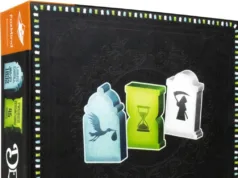
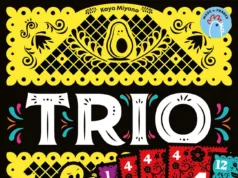











Oh, great one, when will you have a game worth of your greatness….
I hear the human Tony has been enjoying Mansions of Madness and Arkham Horror: The Card Game. Asmodee North American has denied my claim for royalties! I’M CALLING MY LAWYERS ASMODEE!